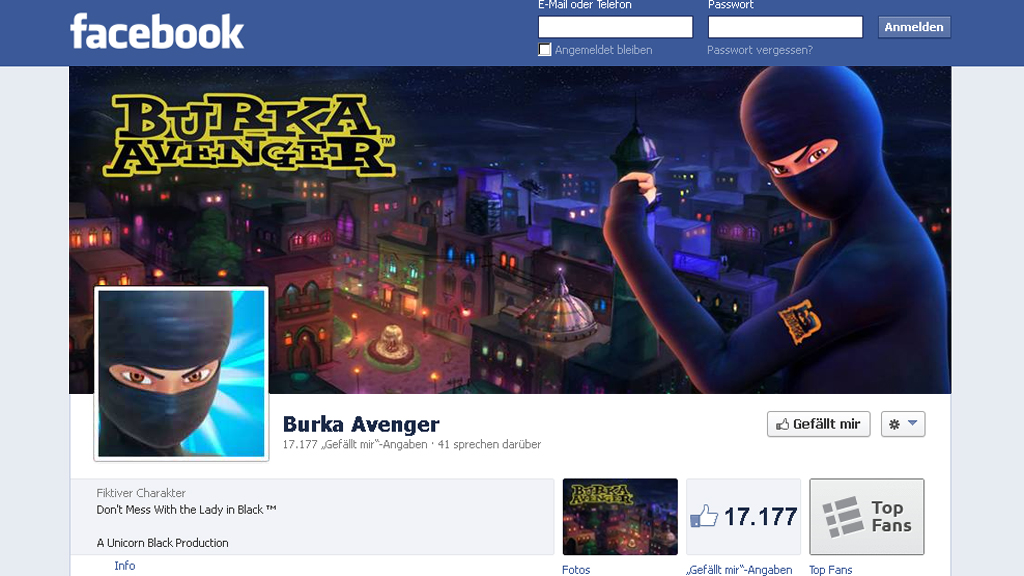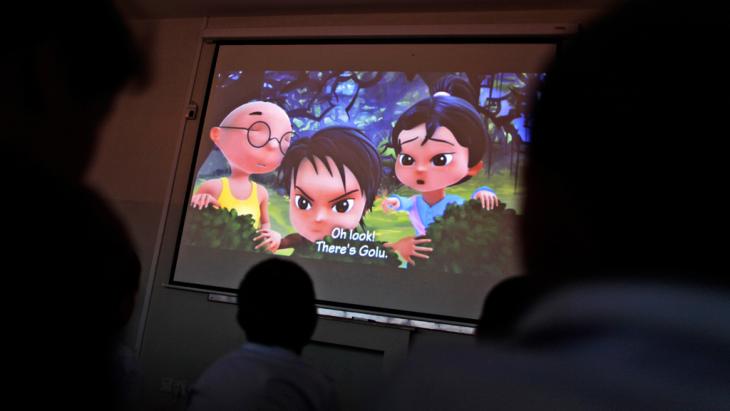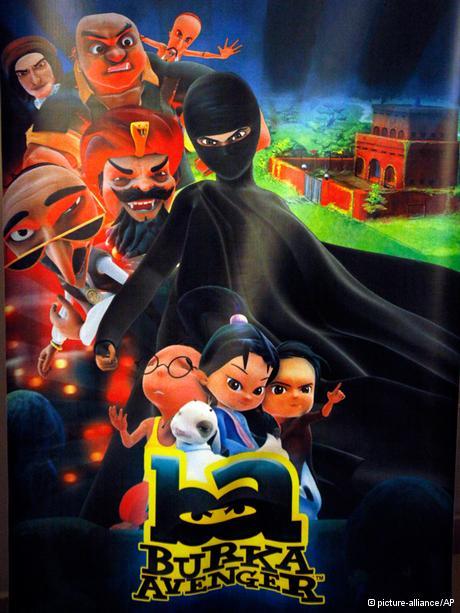Superhero in a Burqa

She is completely covered. Only her eyes and fingers can be seen. The rest of her body is hidden beneath a black burqa. Jiya, as the heroine is called, only wears her burqa during fighting scenes, using her superpowers to fight evil in Pakistan. She doesn't use weapons, but books and pencils instead.
"It's like the phrase 'the pen is mightier than the sword'," explains Haroon Rashid, maker of the cartoon series. "We want to show that education can eliminate many problems."
The TV series comprises 13 episodes, each of which is 22 minutes long. They focus on the story of the heroine, who is a teacher by day, and on three young school children from the imaginary city of Hawalpur.
Not a symbol of oppression
The decision to have the main character of the cartoon wear a piece of clothing common among conservative Muslim women in Pakistan and Afghanistan has not been universally well received in Pakistan and abroad. Some people see the outfit as a symbol of the oppression of women.
"In the West, the burqa has a very strong symbolic value, so people are taken aback by it at first," said Sabine Schiffer, head of the Media Responsibility Institute in Erlangen, Germany. "But the heroine in this story does not fit the clichés. She shows a huge amount of strength when fighting injustice."

In the animated series, the burqa looks more like a ninja outfit than a traditional one. "She only wears it to conceal her identity. Just like other superheroes," explains Rashid. Apart from that, he says, it gives the cartoon a local flavour.
Rashid says he didn't want his main character to wear a suit like Catwoman or Wonder Woman because these racy, figure-hugging outfits objectify and sexualise women.
Moral of the story
The topics of the show vary. Sometimes they are about environmental protection, other times about minority rights. While the series is critical of Pakistani society, the message is packaged as an entertaining show for children. There are no brutal fighting scenes – it is more dialogue-based. In one episode, for example, a magician builds a robot, which is supposed to take over the world. For this, the magician has to send the robot around the world. But his plan fails when his visa application for the EU is rejected.
In the first episode, which was broadcast on Sunday, 28 July, a school in a village is to be closed. But the "Burka Avenger" is able to prevent this from happening. This conflict is all too familiar to Pakistanis. The Taliban reject education for women and girls and have destroyed hundreds of schools in the past. This episode reminds one of the Pakistani girl Malala Yousafzai, who was nearly killed while on her way home from school in October 2012 in a shooting carried out by extremists. Malala had spoken out publicly against the Taliban and criticised their values. She was also active in promoting education for girls.
Target group: Pakistani children
The series is predominantly targeted at children in Pakistan. It is currently being broadcast on a popular Pakistani TV channel in Urdu. A Pashto version is also in the making for Pakistanis in the northwest of the country and also for Pashto-speaking Afghans.

There is also a smartphone app because "that's where it all started," Rashid explains. Three years ago, he and a few IT experts created an interactive app about a female burqa-wearing fighter. For advertising purposes, he had someone create an animation. He liked the animation so much that he decided to create a whole TV series based on it.
Haroon Rashid financed the project largely on his own. He also used his musical background in the production. As a former member of a popular Pakistani boy band, he was clever enough to write songs for the series – each episode features songs written and sung by him along with other Pakistani rock stars.
For Rashid, the number-one objective of the show is to get people to laugh and to convey positive social messages, telling children that people are equal and that education improves the quality of life.
Media expert Sabine Schiffer believes that a lot still has to change in Pakistan for this message to become reality. "The show's message – that you can reach anything through education – is not quite correct when it comes to Pakistan." Even today, she adds, other factors, such as the caste system, often play a large role in determining a person's future.
Rachel Baig
© Deutsche Welle 2013
Editor: Gabriel Domínguez/DW and Aingeal Flanagan/Qantara.de